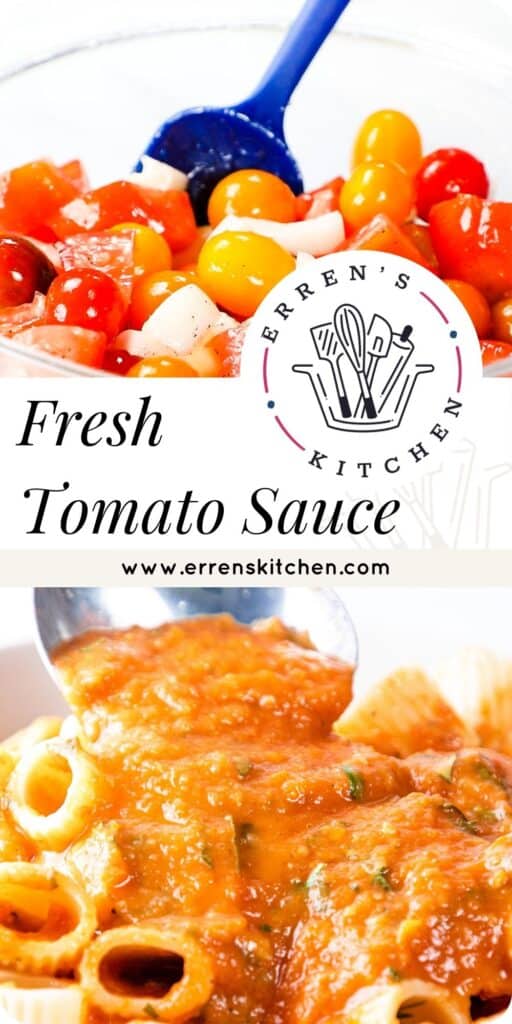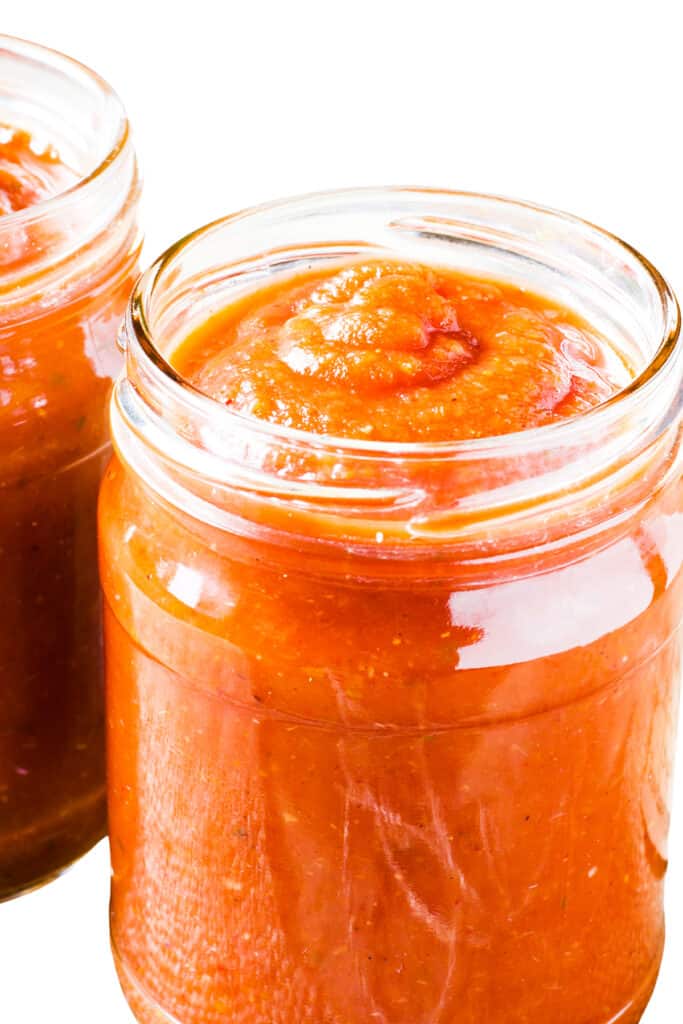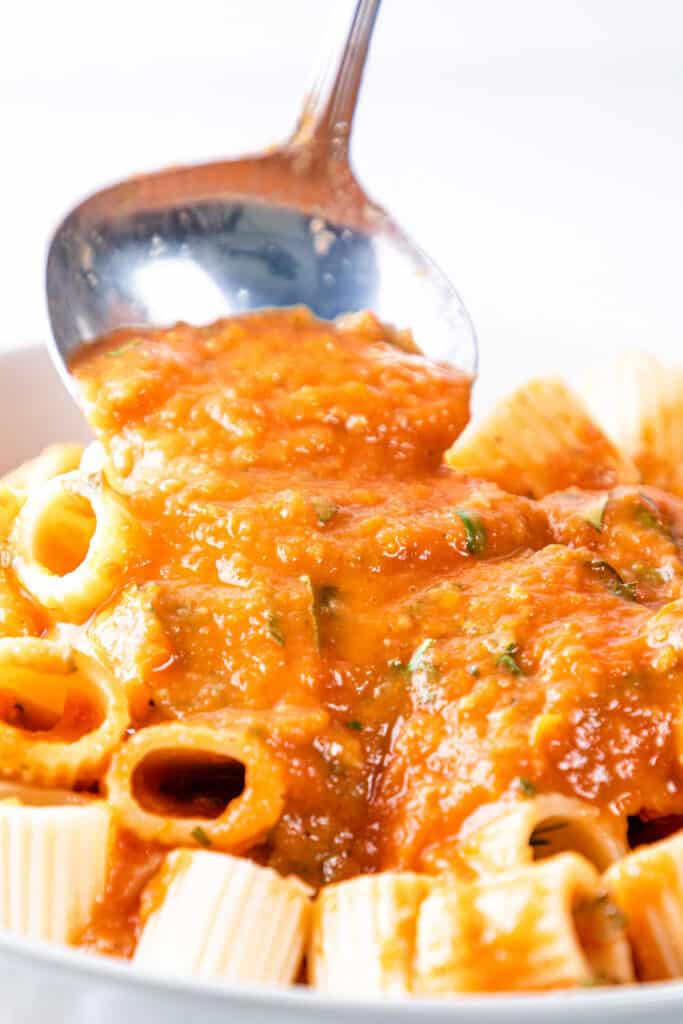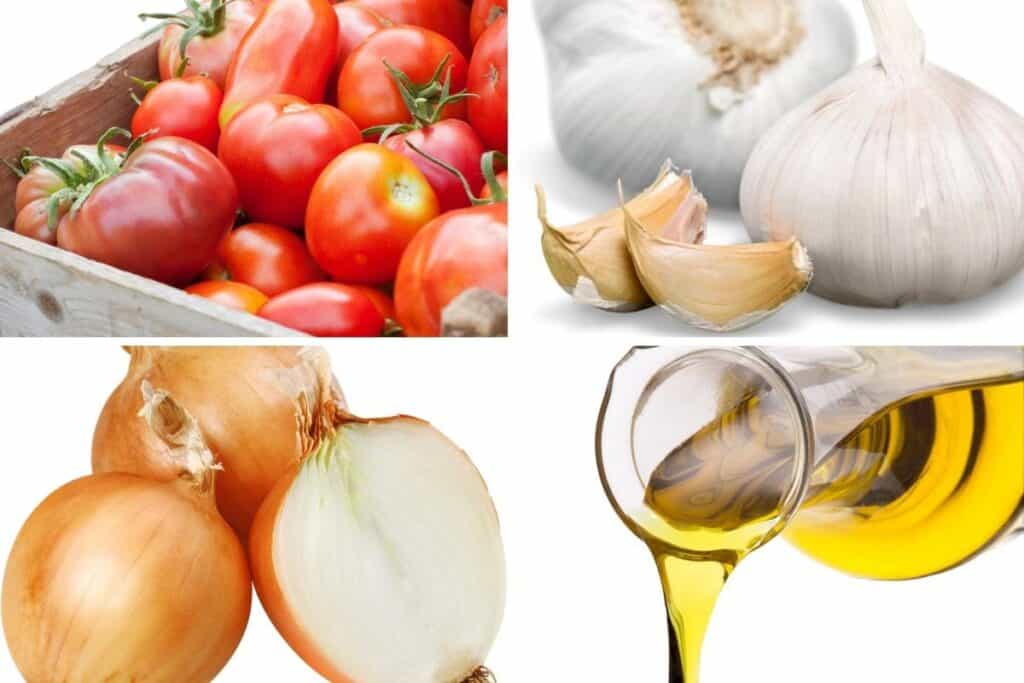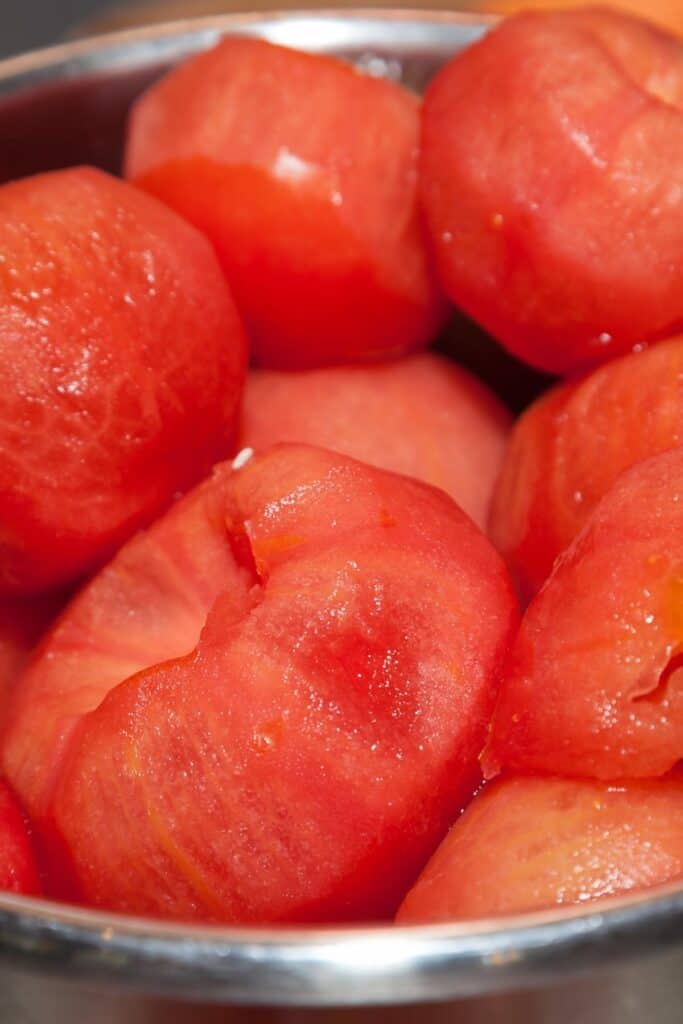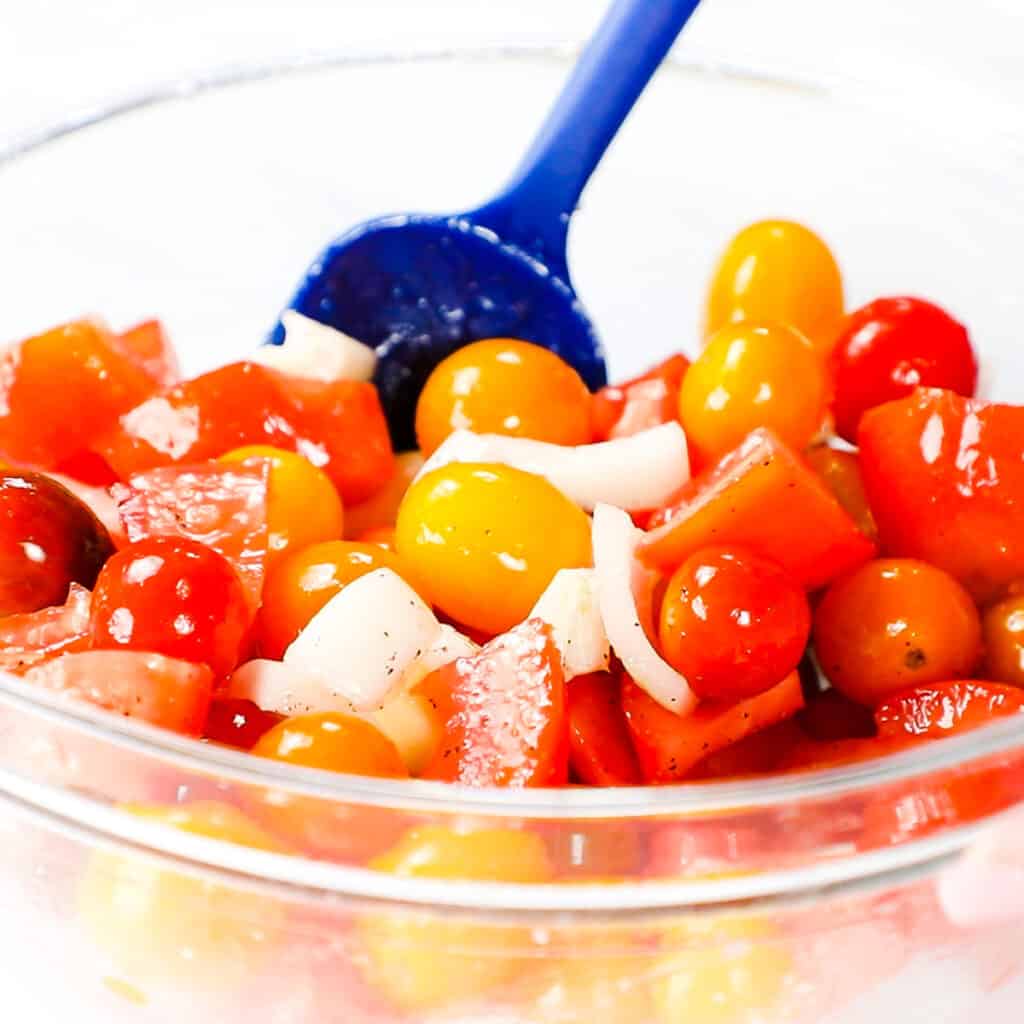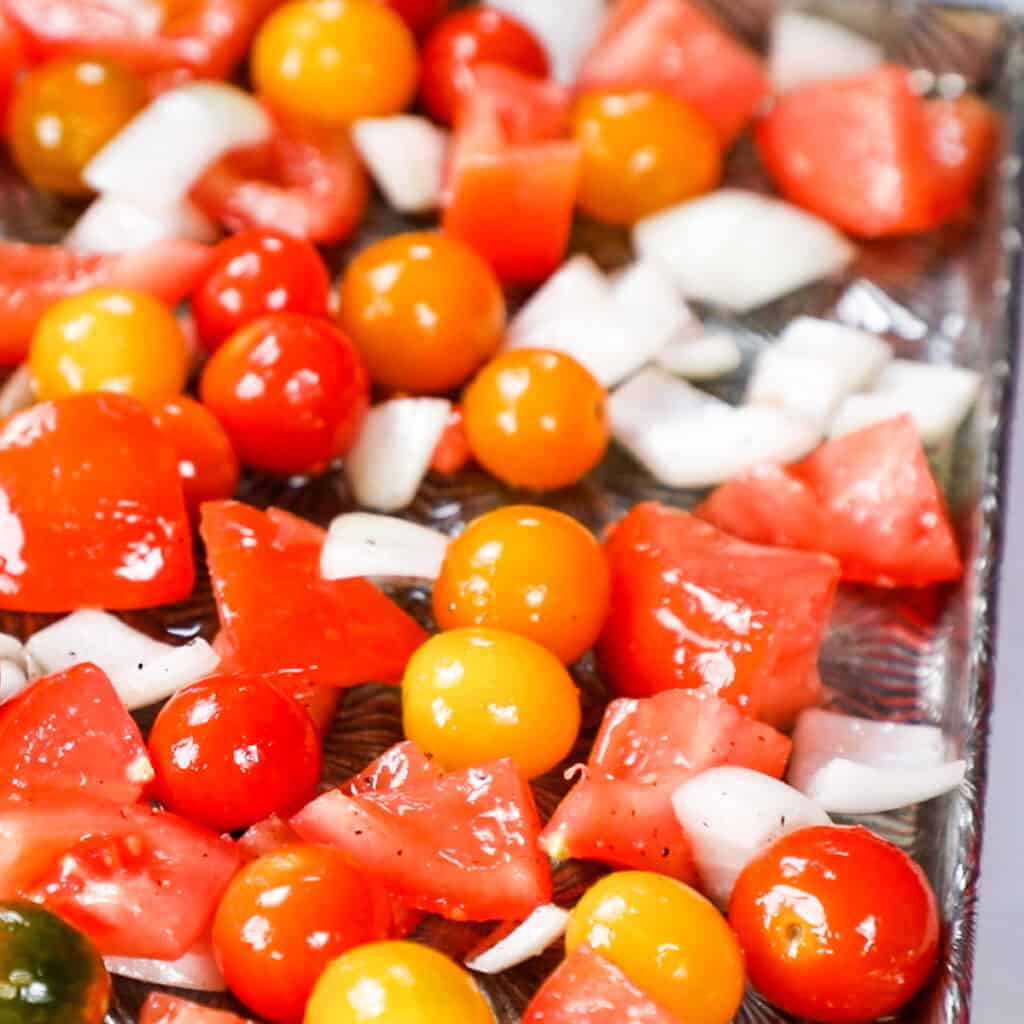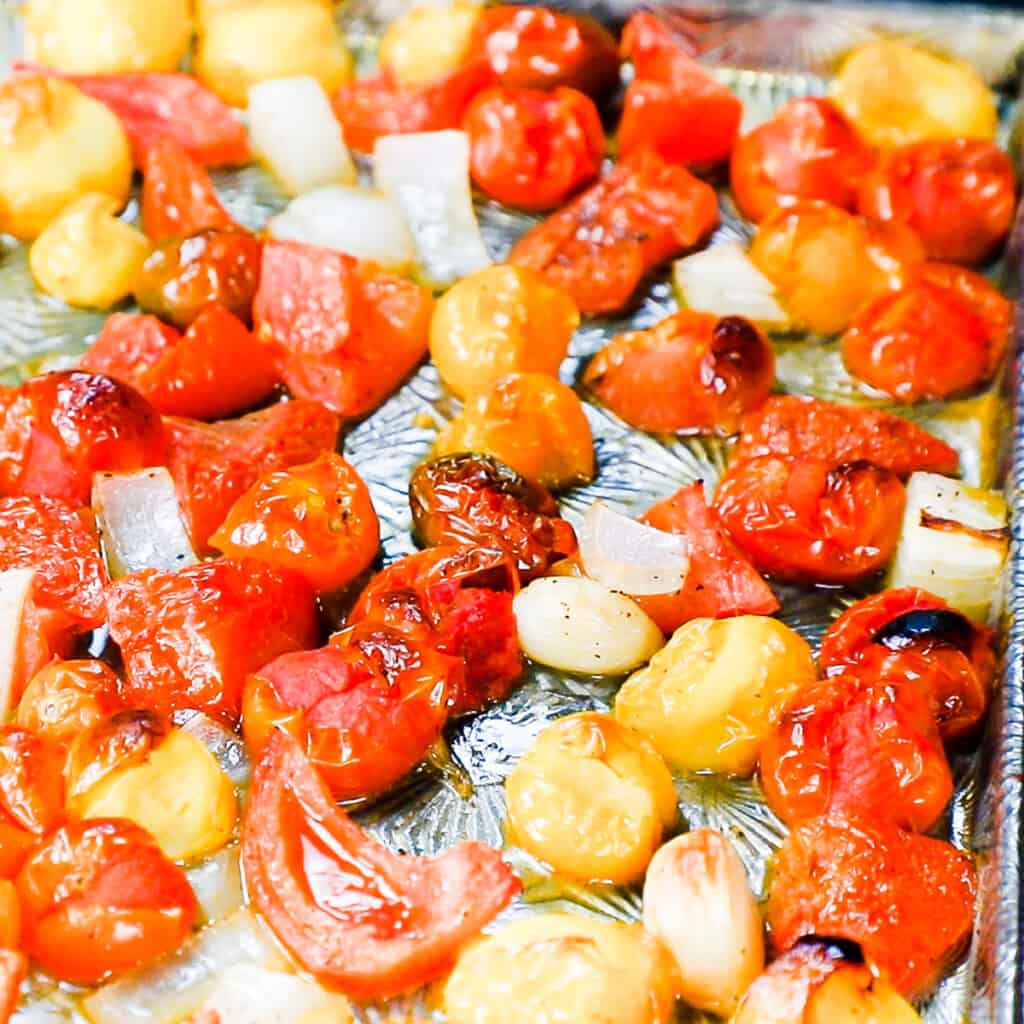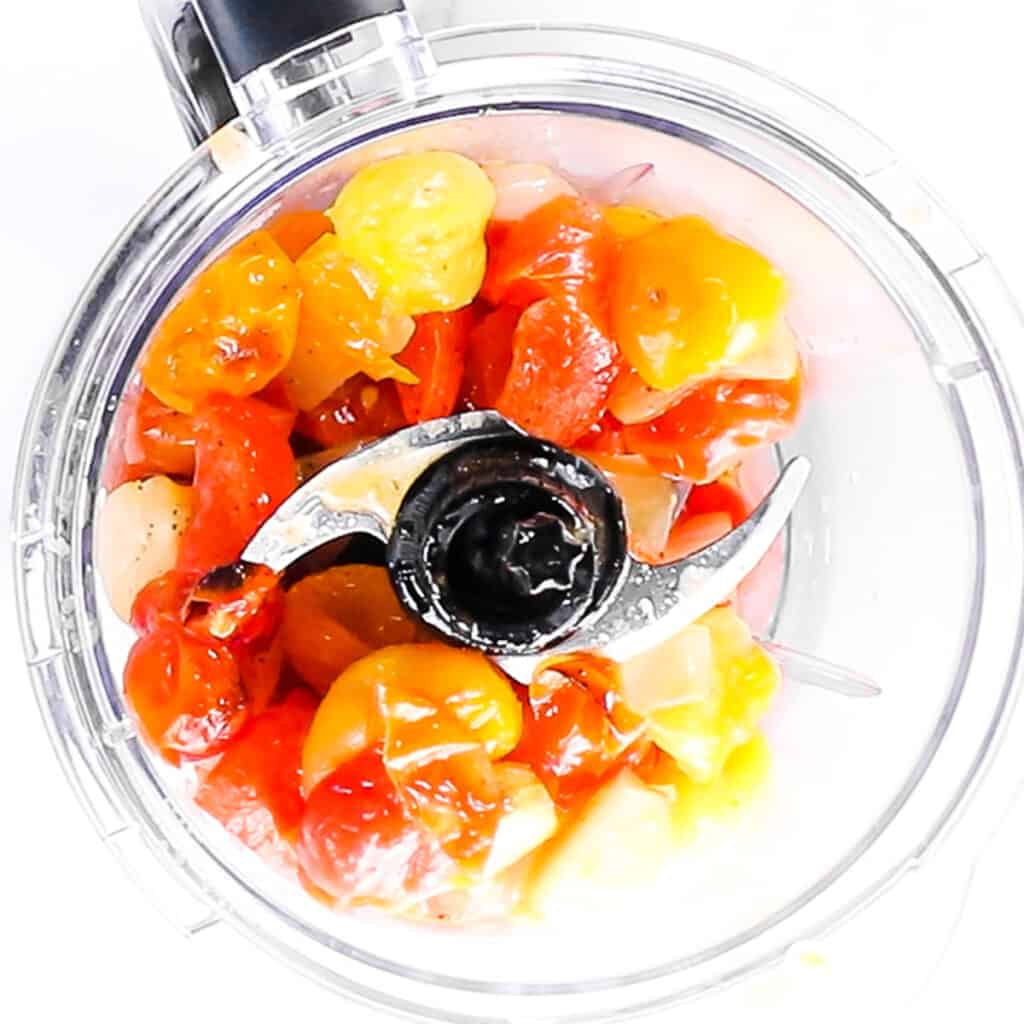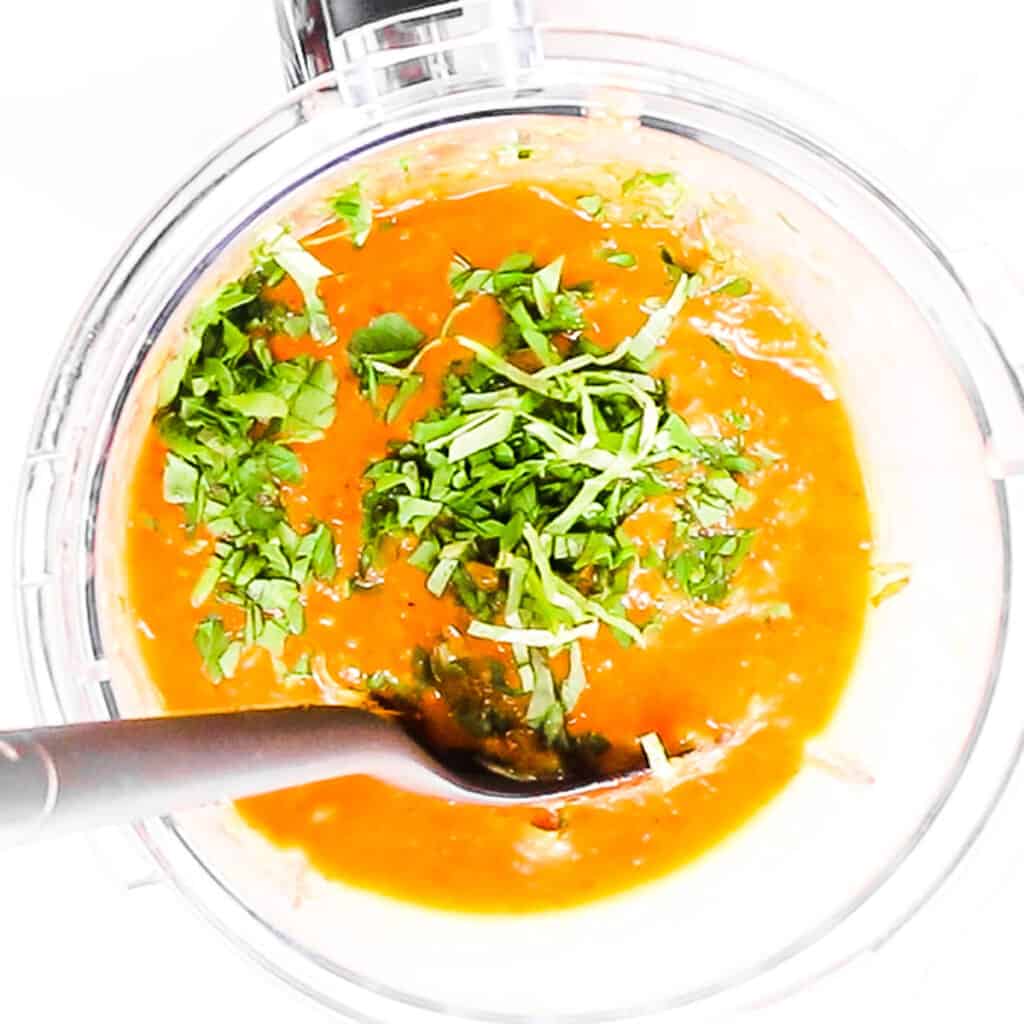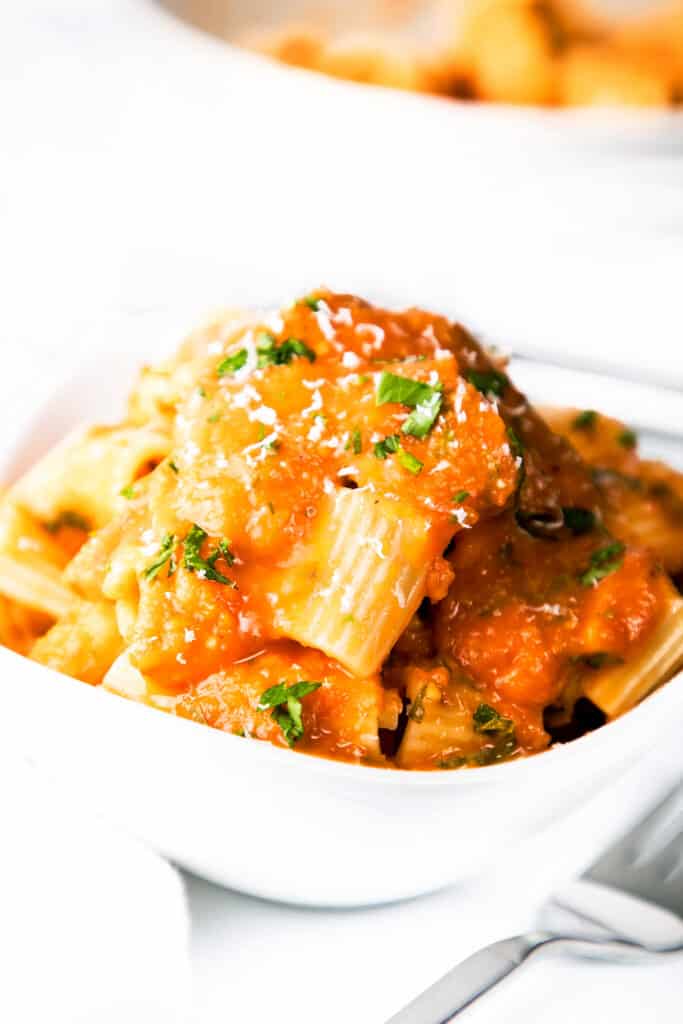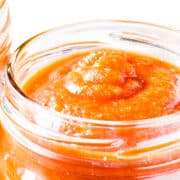One of the most common questions people ask me this time of year is, “What can I do with all these tomatoes?” My answer: Make sauce! It’s a great way to use up your summer’s produce. Making your own tomato sauce is easy and so much tastier than store-bought! Fresh tomatoes are roasted in the oven with onions and garlic and then pureed to create a delicious sauce that can be used in so many different dishes. Plus, you can control the ingredients and make it exactly to your taste. I made mine using various garden tomatoes, but you can use whatever you have on hand. If you have a lot of tomatoes to use up, you can scale the recipe and make a big batch that can be frozen for another time.
How To Make Fresh Tomato Sauce
To ensure even cooking, be sure the onions and tomatoes are cut into evenly sized pieces. If you’re using cherry tomatoes or very small tomatoes, there is no need to cut them. Onions: I use yellow onions, but white or red onions will work too. You can leave the onions out if you want, but they do add a bit of sweetness and depth of flavor to the sauce. Garlic: Fresh garlic is best for this recipe. I like roasting the garlic and the tomatoes for a more mellow flavor. If you prefer a more pronounced garlic flavor, you can mince the garlic and add it for the last five to ten minutes of roasting. If you want to use garlic powder, add it with salt and pepper. Herbs: I like fresh basil or parsley, but you can also use dried herbs like basil or oregano. Olive Oil: You can use any type of oil you like, but I prefer olive oil for its flavor. Add the tomatoes, garlic, and onion to a mixing bowl or food storage bag. Add the olive oil and, season with salt & pepper, and toss to coat. Transfer to a sheet pan with a raised 1-inch lip and spread evenly over the pan. Roast for 30 to 35 minutes or until soft. Allowing them to get browned will add extra flavor. Add the vegetables to a blender or food processor. Puree the mixture to your desired smoothness. Add your chopped herbs. Mix to combine and taste for seasoning before serving. To Freeze: Let the sauce cool completely, then transfer to airtight freezer-safe containers and freeze for up to three months. Reheating: Thaw frozen sauce in the fridge overnight, then reheat on the stove over low heat until warmed through. Or, reheat directly from frozen in a microwave-safe dish. Erren’s Kitchen is written and produced for informational intentions only. We are not certified nutritionists, and the nutritional information found on this site has not been assessed or authorized by a nutritionist or the FDA. The nutritional information found in our recipes is offered as an estimate and should not be considered a guarantee or fact. The estimated data is provided as a courtesy and calculated through a third-party online nutritional calculator, spoonacular API. Although we do our best to provide accurate nutritional information, these figures should be considered rough estimates. Many factors, such as brands or products purchased and the nutritional fluctuations that naturally occur in fresh produce, can alter the effectiveness of the nutritional information in any recipe. Furthermore, various online calculators provide different results depending on their particular algorithms and nutrition fact sources. To obtain the most precise nutritional information in a provided recipe, you should calculate the nutritional information with the exact ingredients you are using when preparing the recipe using your preferred nutrition calculator.
